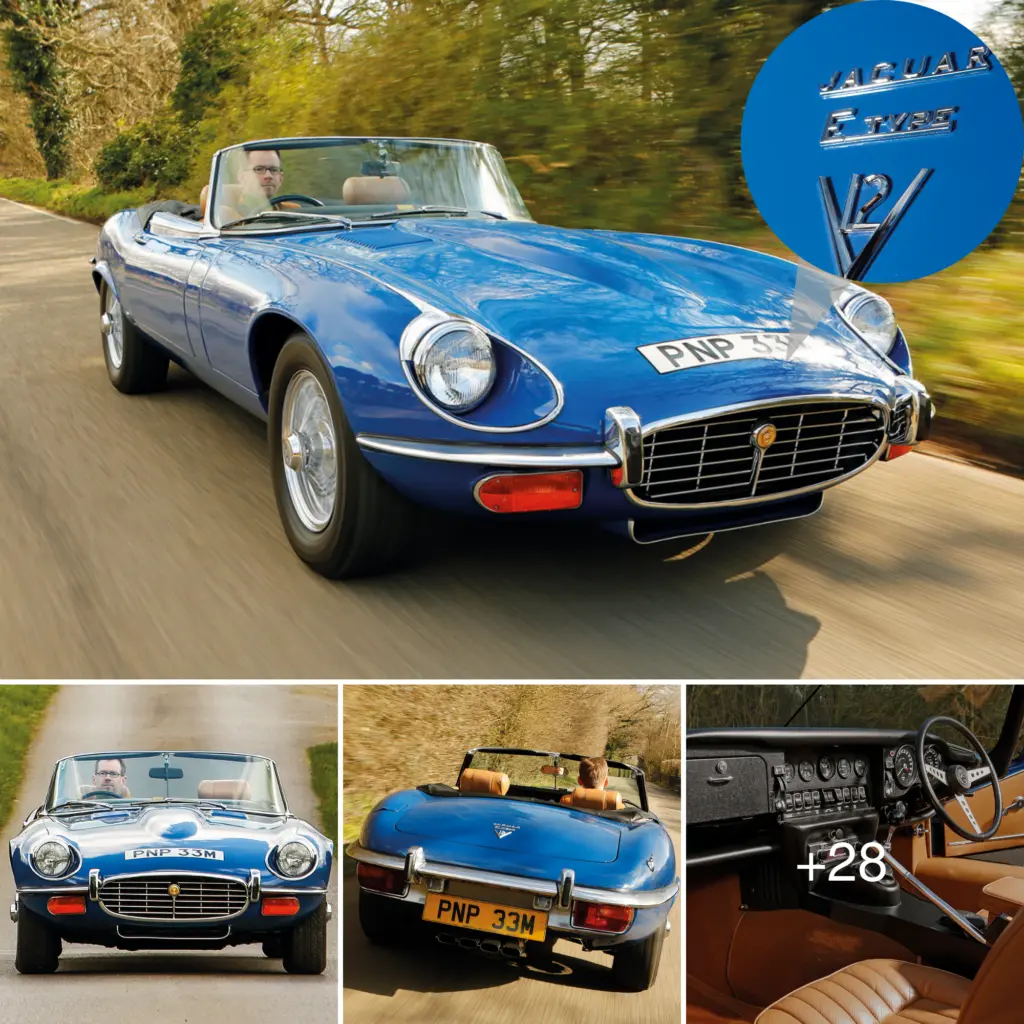
With the original E-type of 1961, Jaguar created a world-beater without a single serious rival.
Indecently quick, achingly beautiful and sold at a bargain-basement price, it’s little wonder that William Lyons’ race-bred sportster became the darling of the swinging ’60s.
Here was a sublime pin-up to rival Twiggy’s androgynous delicacy and partner the hippest icons of a generation.

What cooler way to close trendy chat show Dee Time than with an E-type?
The Jaguar was as much a part of the headlines as Geoff Hurst’s hat-trick, Mary Quant’s hemlines and Paddy Hopkirk’s mastery on the Monte.
A decade into the car’s lifetime, though, the world had changed.
The Beatles had gone their separate ways, Simon Dee had signed on and, a far cry from ’66, England’s ‘Wingless Wonders’ went out of the 1970 World Cup in the quarter finals.

A year later, the Mini Cooper was gone, too, replaced by a blunt-nosed by-product of BL’s myopic business plan.
Like it or not, the ’60s were over, and it was time to move on.
Dare I even suggest that, exquisite though the E-type had been at launch, the shape was starting to look a bit dated alongside newer designs?
And the performance from its by then-strangulated straight-six had slipped further from the fantastic – albeit strategically enhanced – 150mph top speed that had stunned the world in ’61.

“With the 3.8- and 4.2-litre, we’d had a very good car,” recalls Jaguar’s former chief test driver Norman Dewis, “but the emissions regulations in the States had sapped a lot of power from the Series 2.
“Performance was what sold the E-type, but we couldn’t clean up the ‘six’ any further without losing yet more power.”“America was our most important market,” he continues, “and [Sir William] Lyons was insistent that we had to keep our customers there happy.
“We needed to get the performance back – and we had just the thing to do that.”
The answer, of course, was the magnificent V12 that had first seen the light of day in the ill-fated XJ13 of 1966, although the engine’s history goes back considerably further.

“It was designed by Claude Bailey in around 1958 or ’59,” explains Dewis, “but at that time we were doing fine with the ‘sixes’ so we didn’t need it.
“It wasn’t until [Walter] Hassan returned to Jaguar from Coventry Climax that we did anything with it.”

“We built a 5-litre four-cam version for the XJ13 and that produced 510-550bhp, but then they brought in the 3-litre limit at Le Mans, making it redundant,” says Dewis.

“When it came to giving the E-type more power, though, that engine was perfect.”
Weighing in at 680lb, the new all-alloy unit was remarkably just 80lb heavier than the iron-block ‘six’ and, as the world’s first mass-produced V12 since the late-’30s Lincolns, would give the E-type a unique selling point.
In the transition from racer to road car, the engine lost a brace of camshafts and gained an extra 300cc, but was none the worse for that.